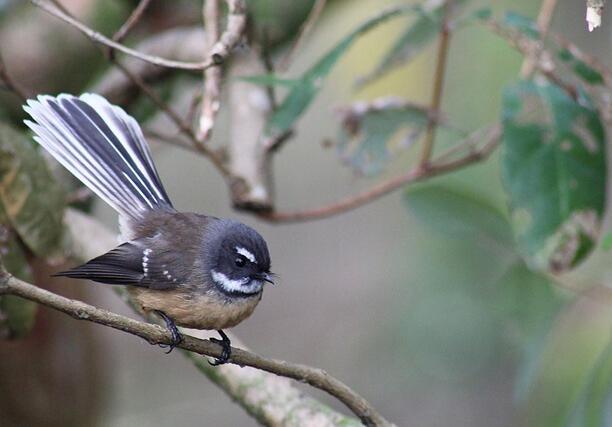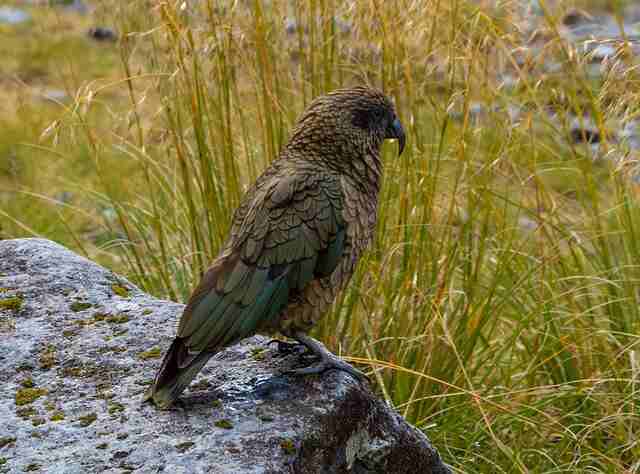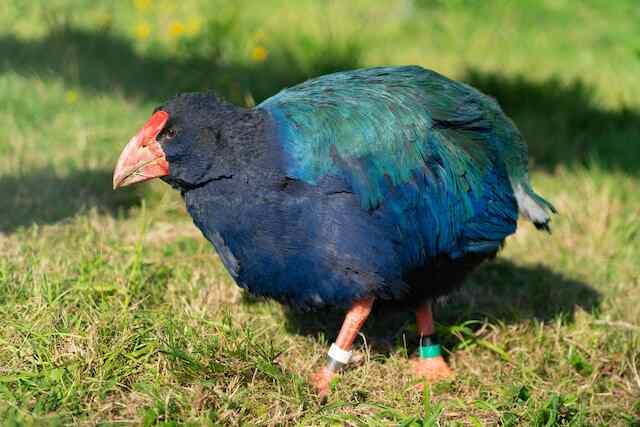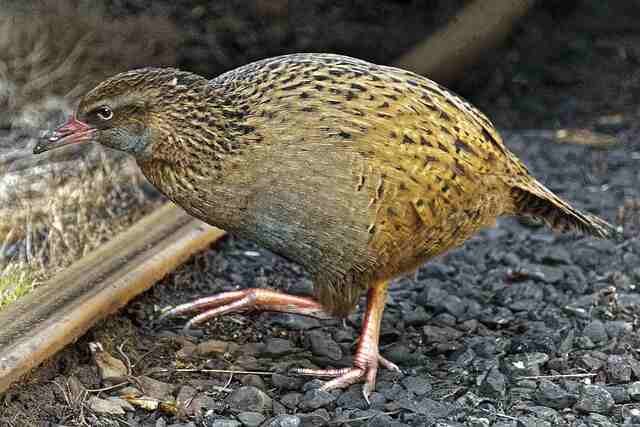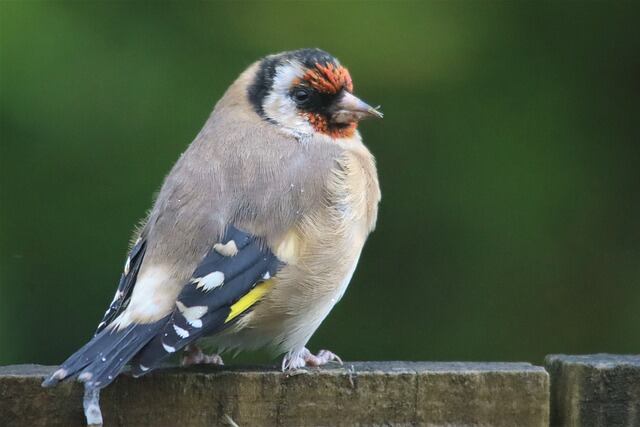New Zealand is a birdwatcher’s paradise, home to a vast array of bird species found nowhere else on earth. From flightless nocturnal parrots to the majestic Royal Albatross, New Zealand’s avian wonders are truly a sight to behold.
In this article, we will introduce you to the 20 must-see birds of New Zealand, highlighting their unique characteristics and the best places to observe them in their natural habitats.
Table of Contents
- 1 Key Takeaways:
- 2 Must See Birds of New Zealand
- 3 Birdwatching in New Zealand: A Nature Lover’s Paradise
- 4 Endemic Birds of New Zealand: A True Symbol of Kiwi Spirit
- 5 The Majestic Albatross: A Bird of Epic Proportions
- 6 The Charming Kiwi: New Zealand’s National Treasure
- 7 The Colorful Fantail: A Flutter of Beauty
- 8 The Mischievous Kea: New Zealand’s Clever Parrot
- 9 The Graceful Royal Albatross: Wings Across the Ocean
- 10 The Elusive Takahe: A Rare Gem of New Zealand
- 11 The Enchanting Kakapo: A Parrot Like No Other
- 12 Birdwatching Tours in New Zealand: An Ornithologist’s Dream
- 13 Conservation Efforts: Protecting New Zealand’s Feathered Treasures
- 14 Conclusion: Discover the Beauty of New Zealand’s Avian Wonders
- 15 FAQs: Birds of New Zealand
- 15.1 How many bird species are found in New Zealand?
- 15.2 Where is the best place to go birdwatching in New Zealand?
- 15.3 What are some of the endemic bird species found in New Zealand?
- 15.4 What makes albatrosses unique?
- 15.5 What is the national bird of New Zealand?
- 15.6 What is special about the fantail bird?
- 15.7 Why are Kea considered clever parrots?
- 15.8 Where can I see royal albatrosses in New Zealand?
- 15.9 What is the conservation status of the Takahe?
- 15.10 How many Kakapo are left in the world?
- 15.11 What birdwatching tours are available in New Zealand?
- 15.12 How can I contribute to bird conservation in New Zealand?
- 16 Author
Key Takeaways:
- New Zealand is home to some of the most unique and diverse bird species in the world.
- Must-see birds of New Zealand include flightless parrots, majestic albatrosses, and charming fantails, among others.
- Birdwatching in New Zealand provides a unique opportunity to observe these avian wonders in their natural habitats.
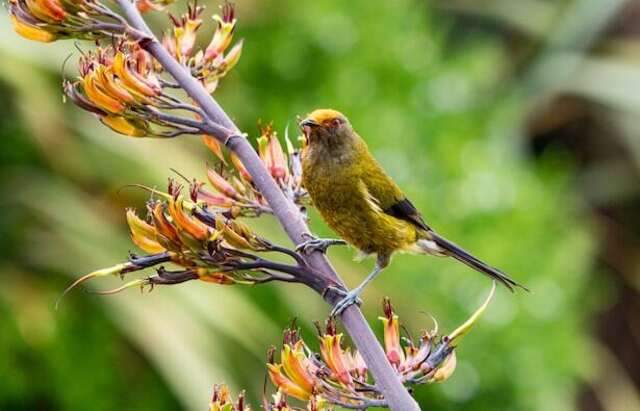
Must See Birds of New Zealand
“New Zealand is a birdwatcher’s paradise, with a diverse range of bird species found nowhere else in the world. The majestic Northern Gannet, playful Kea Parrot, and plump Californian Quail are just a few of the must-see birds in this beautiful country.
Other common birds to spot include the iconic Kiwi, Tui, Fantail, Bellbird, Yellow-eyed Penguin, Albatross, and more. Plan your birdwatching adventure today and explore the unique birdlife of New Zealand!”
Birdwatching in New Zealand: A Nature Lover’s Paradise
New Zealand is a birdwatcher’s dream, offering some of the best birdwatching destinations in the world. With its diverse range of ecosystems, from coastal areas to alpine regions, the country is home to a wide variety of bird species. Every year, thousands of bird enthusiasts flock to New Zealand to observe its feathered residents in their natural habitats.
Birdwatching in New Zealand provides an incredible opportunity to witness rare and endemic bird species. The country boasts over 100 bird species that are found nowhere else in the world. From flightless birds like the kiwi to the majestic albatross, there’s a bird for every type of birdwatcher.
The best birdwatching destinations in New Zealand include Tiritiri Matangi Island, Kapiti Island, Stewart Island, and the Otago Peninsula. Each of these locations offers unique birdwatching experiences, from spotting the elusive kiwi in its natural habitat to observing massive albatross colonies.
One of the best things about birdwatching in New Zealand is the accessibility of the birdwatching sites. Many of the country’s best birdwatching destinations are easily accessible and require little effort to reach. However, for those seeking a more adventurous experience, guided birdwatching tours are available in many locations.
Whether you’re an experienced birdwatcher or a beginner, New Zealand offers something for everyone. Its diverse range of bird species and stunning landscapes make it a nature lover’s paradise. With conservation efforts in place to protect the country’s unique birdlife, there’s never been a better time to experience the beauty of birdwatching in New Zealand.

Endemic Birds of New Zealand: A True Symbol of Kiwi Spirit
New Zealand is home to a variety of unique bird species, many of which can only be found within the country’s borders. These birds, known as endemic species, have adapted to New Zealand’s isolated environment over millions of years.
Some of the most notable endemic birds of New Zealand include the Kakapo, Takahe, and Kiwi. The Kakapo is a flightless parrot that is critically endangered, with only around 200 individuals left in the wild. The Takahe is another flightless bird that was once thought to be extinct until it was rediscovered in the 1940s. The Kiwi, on the other hand, is a flightless bird with a distinctive long beak and is a beloved symbol of New Zealand.
Endemic birds of New Zealand have some unique characteristics that set them apart from other bird species. For example, many of these birds have lost the ability to fly due to the absence of mammalian predators in New Zealand’s ecosystem. Additionally, New Zealand’s endemic birds have evolved to have distinct physical features and behaviors that make them well-adapted to their surroundings.
Unfortunately, many of these endemic bird species are threatened with extinction due to habitat loss and introduced predators such as rats and stoats. Conservation efforts are in place to protect these unique birds and their habitats, and visitors to New Zealand can also play a role in supporting these programs by observing responsible tourism practices.
The Majestic Albatross: A Bird of Epic Proportions
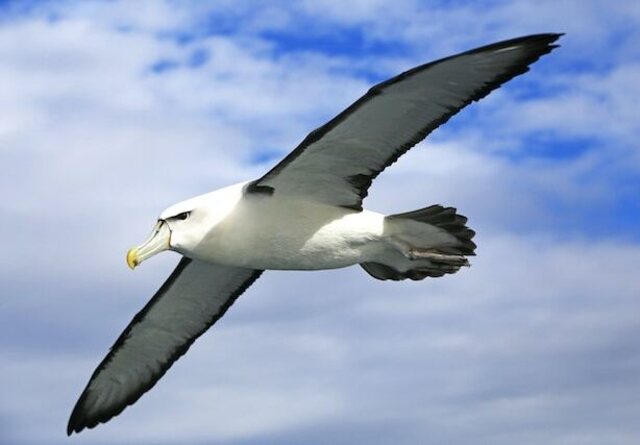
The albatross is one of the most fascinating bird species found in New Zealand. With a wingspan of up to 3.5 meters, it is the largest seabird in the world. These magnificent birds spend most of their lives at sea, only coming to land for breeding.
New Zealand is home to more than 10 species of albatross, including the royal albatross, southern royal albatross, and wandering albatross. The best places to observe these birds are on the coastal cliffs and headlands around the South Island.
| Species | Wingspan | Location |
|---|---|---|
| Royal albatross | 2.9 meters | Otago Peninsula |
| Wandering albatross | 3.5 meters | Kaikoura |
| Southern royal albatross | 3 meters | Otago Peninsula |
Albatrosses are known for their incredible flying abilities and unique adaptations, such as the ability to travel long distances without flapping their wings. They are also known for their courtship rituals, where they use various displays, such as clacking their bills or spreading their wings, to attract mates.
Birdwatching in New Zealand is not complete without observing these majestic creatures. Several tours are available to take you to the best spots to observe them in their natural habitat. Whether you’re an experienced birdwatcher or a nature lover, the albatross is truly a bird of epic proportions.
The Charming Kiwi: New Zealand’s National Treasure
New Zealand’s national symbol, the Kiwi bird, is a beloved and unique species that is a must-see for any birdwatching enthusiast. With five different species found throughout the country, the Kiwi is a true icon of New Zealand’s avian world.
These small, flightless birds are known for their distinctive long beaks, which they use to find insects and other invertebrates in the forest floor. Their feathers are soft and hair-like, making them a truly unique sight to behold.
While Kiwis are elusive and difficult to spot in the wild, there are opportunities to see them in captivity and through conservation efforts. These include nocturnal visits to wildlife sanctuaries and special tours that allow visitors to witness these charming birds up close.
The conservation of Kiwis is a high priority in New Zealand, with various programs in place to protect these precious species. The introduction of mammalian predators such as possums, stoats, and rats has threatened the Kiwi populations, which makes preserving their habitats and providing predator control crucial to their survival.
With their unique characteristics and status as a national treasure, the Kiwi is undoubtedly one of the best birds to see in New Zealand.
The Colorful Fantail: A Flutter of Beauty
New Zealand is home to several bird species, but few can top the charm of the New Zealand fantail. These small birds are known for their vibrant plumage and unique behavior, making them a popular sight among nature lovers.
The fantail’s distinctive fan-shaped tail and fluttering flight pattern make them easy to spot. These birds can be found in forests throughout New Zealand, making them one of the best birds to see in the country.
With their playful nature and striking colors, the fantail is sure to enchant any birdwatcher. Keep an eye out for them on your next journey through New Zealand’s great outdoors.
The Mischievous Kea: New Zealand’s Clever Parrot
New Zealand’s South Island is home to the intelligent and curious Kea, a parrot species that is as mischievous as it is captivating. These birds are known for their playful nature and distinctive calls, which often echo through the mountains.
While sightings of the Kea are common in certain areas, such as Arthur’s Pass National Park, they are a rare and unique find for birdwatchers in New Zealand. Known for their cleverness and problem-solving abilities, the Kea’s inquisitive nature can sometimes lead to conflict with humans.
As a result, conservation efforts are underway to protect this iconic species, which is listed as vulnerable on the IUCN Red List of Threatened Species.
Visitors to New Zealand interested in observing the Kea can do so on guided birdwatching tours in areas where they are known to congregate. These tours often allow visitors to see the Kea up close and learn more about their behavior, habitat, and unique adaptations.
A visit to New Zealand is incomplete without experiencing the charm and intelligence of the Kea.
The Graceful Royal Albatross: Wings Across the Ocean
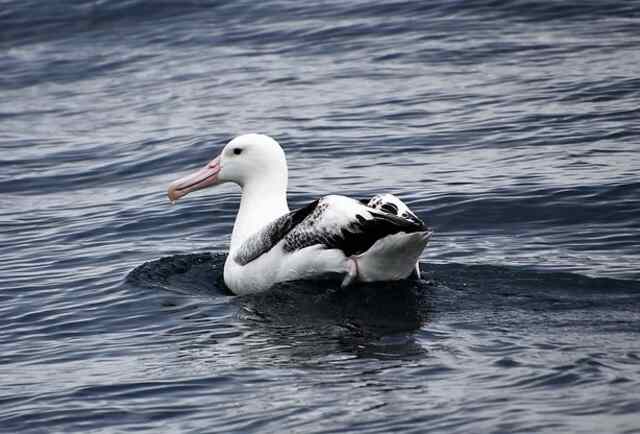
The royal albatross is one of the largest seabirds in the world, with a wingspan of up to three meters. With their exquisite white and black plumage, these majestic birds glide effortlessly over the vast ocean waters, embarking on journeys of thousands of miles.
New Zealand is home to the world’s only mainland breeding colony of royal albatross, located on the Otago Peninsula. Visitors can observe these incredible birds up close at the Royal Albatross Centre, where guided tours are available.
The best way to watch these birds in their natural habitats is on a birdwatching tour in New Zealand. These tours offer a unique opportunity to witness the royal albatross in flight, as they soar over the vast expanse of the Pacific Ocean.
The Elusive Takahe: A Rare Gem of New Zealand
New Zealand’s Takahe is a critically endangered species and is one of the rarest birds in the world. It is a flightless, ground-dwelling bird with bright blue feathers and a distinctive red beak. The Takahe was once thought to be extinct until a small population was discovered in the Murchison Mountains of Fiordland in 1948.
The Takahe is a bird that is worth seeing, and New Zealand is one of the best places to do so. The Takahe can be found around the Murchison Mountains, where the Department of Conservation has established a breeding program to help increase their population. Visitors can see the Takahe at several sites in the area, including the Te Anau Bird Sanctuary and the Fiordland National Park.
If you are planning a birdwatching trip to New Zealand, make sure to add the Takahe to your list of must-see birds. It is a true gem of New Zealand and a testament to the country’s commitment to conserving its unique bird species.
The Enchanting Kakapo: A Parrot Like No Other
One of the rarest birds in the world, the Kakapo is a flightless, nocturnal parrot native to New Zealand. With only about 200 individuals left in the wild, the Kakapo is critically endangered and is one of the most unique bird species in the country.
The Kakapo is a large, owl-like parrot, with green and yellow feathers and a distinctive face. They are mostly active at night and have a unique booming call that can be heard for up to a mile away. Due to their critically endangered status, the Kakapo is one of the most difficult birds to observe in the wild, but the conservation efforts in place have made it possible for a lucky few to witness their charm.
One of the most interesting facts about the Kakapo is their breeding behavior. Unlike other parrots, the Kakapo does not breed every year, but only during rimu fruiting events that occur every two to four years. During these events, the males congregate in an area and perform a booming display to attract females. After mating, the females lay their eggs in a carefully constructed nest on the ground.
Conservationists and scientists have been working tirelessly to save the Kakapo from extinction. Their efforts include habitat restoration, predator control, and a breeding program that has managed to increase the Kakapo population from only 51 individuals in the 1990s to around 200 today.
Due to their rarity, observing a Kakapo in the wild is a once-in-a-lifetime experience and is an unforgettable highlight of any birdwatching trip to New Zealand.
Birdwatching Tours in New Zealand: An Ornithologist’s Dream
New Zealand is a birdwatching paradise, with diverse habitats that offer a variety of bird species to observe. Whether you’re a beginner or an experienced birdwatcher, there are plenty of birdwatching tours available that cater to your needs and interests.
Birdwatching Destinations in New Zealand
The best birdwatching destinations in New Zealand are located in the South Island. Stewart Island, Fiordland, and the West Coast are known to house a significant number of bird species. If you’re interested in seabirds, take a trip to the Otago Peninsula and experience the thrill of seeing albatross, penguins, and other seabirds up close.
The North Island also has several birdwatching destinations, including Tiritiri Matangi Island, Miranda Shorebird Centre, and Kapiti Island. These islands are home to a significant number of New Zealand’s endangered bird species.
Birdwatching Tours in New Zealand
Birdwatching tours in New Zealand are led by experienced guides who have extensive knowledge of the bird species in the country. These tours range from half-day trips to multi-day tours and can be customized to suit your interests and needs.
If you’re interested in bird photography, some tours offer specialized photography trips. These trips include expert photography guidance, allowing you to capture stunning shots of New Zealand’s bird species.
Accommodations and Equipment
Many birdwatching tours in New Zealand offer accommodations, transportation, and equipment. Accommodations range from camping to luxury lodges, depending on your preference and budget.
The equipment provided on the tour varies, but most tours offer binoculars, spotting scopes, and reference books to help you identify different bird species. Some tours also include transportation to and from the birdwatching destinations.
Overall, New Zealand is a birdwatching mecca that offers some of the most unique bird species in the world. Whether you’re an avid birdwatcher or a nature lover, there’s something for everyone in this beautiful country.
Conservation Efforts: Protecting New Zealand’s Feathered Treasures
New Zealand is home to a vast array of unique and endemic bird species that are treasured by locals and visitors alike. However, many of these feathered treasures are under threat due to habitat loss, introduced predators, and other human-induced pressures. As a result, conservation efforts are vital to protect and preserve these species for future generations.
One of the most significant threats to New Zealand’s bird populations is the introduction of non-native predators such as rats, stoats, and possums. These predators can destroy entire bird populations, and the effects of their presence have been observed throughout the country.
To combat this, extensive predator control programs have been put in place to limit their impact on bird species. These programs focus on trapping, poisoning, and other methods that target specific predators while minimizing harm to other wildlife.
In addition to predator control, habitat preservation is also an essential aspect of bird conservation in New Zealand. Many endemic bird species rely on specific habitats to survive, and the destruction or degradation of these habitats can have severe consequences.
To address this issue, protected areas have been established throughout the country, and efforts are ongoing to restore and enhance habitat quality for birds.
Community involvement is another critical component of New Zealand’s bird conservation efforts. Local communities are encouraged to participate in predator control programs and other initiatives aimed at preserving bird populations.
This community-led approach has been successful in several areas, and it emphasizes the importance of a collaborative effort to protect New Zealand’s birdlife.
In conclusion, New Zealand’s endemic bird species are part of the country’s rich natural heritage and are worth protecting. Through predator control programs, habitat preservation, and community involvement, efforts are underway to safeguard these species for future generations.
Everyone can play a role in supporting these efforts, whether it’s by volunteering with local conservation groups, supporting related charities, or simply spreading awareness about the importance of bird conservation in New Zealand.
Conclusion: Discover the Beauty of New Zealand’s Avian Wonders
New Zealand is a natural paradise for birdwatchers, boasting an array of unique and fascinating bird species that make it a top destination for ornithology enthusiasts. From the iconic Kiwi to the majestic albatross, New Zealand’s avian wonders offer a truly unforgettable experience for nature lovers.
It is important to note, however, that many of these species are endangered, and their habitats are under constant threat. Conservation efforts play a crucial role in preserving these feathered treasures for future generations.
Whether you’re an experienced birder or a curious beginner, there are many opportunities to explore and learn about New Zealand’s birdlife. With specialized birdwatching tours available and dedicated conservation programs in place, the beauty of New Zealand’s avian wonders is waiting to be discovered.
FAQs: Birds of New Zealand
How many bird species are found in New Zealand?
New Zealand is home to over 400 bird species, many of which are endemic to the country.
Where is the best place to go birdwatching in New Zealand?
There are several birdwatching destinations in New Zealand, including the Tiritiri Matangi Island, Fiordland National Park, and the Otago Peninsula.
What are some of the endemic bird species found in New Zealand?
Some notable endemic bird species in New Zealand include the Kakapo, Takahe, and Kiwi.
What makes albatrosses unique?
Albatrosses are known for their epic wingspan, with some species having a wingspan of up to 11 feet. They are also highly adapted to life at sea and can travel incredible distances.
What is the national bird of New Zealand?
The Kiwi is the national bird of New Zealand and is known for its charming appearance and unique characteristics.
What is special about the fantail bird?
Fantails are known for their colorful plumage and distinctive fan-shaped tail. They are also highly energetic and have a fluttering flight pattern.
Why are Kea considered clever parrots?
Kea are known for their intelligence and curiosity. They have been observed solving puzzles, using tools, and even displaying playful behavior.
Where can I see royal albatrosses in New Zealand?
Royal albatrosses can be observed at the Taiaroa Head breeding colony on the Otago Peninsula in New Zealand.
What is the conservation status of the Takahe?
The Takahe is classified as endangered and is one of the rarest bird species in New Zealand.
How many Kakapo are left in the world?
The Kakapo is critically endangered, with only around 200 individuals remaining in the world.
What birdwatching tours are available in New Zealand?
There are various birdwatching tours available in New Zealand, catering to different regions and bird species. Some popular tours include visits to the North Island and South Island.
How can I contribute to bird conservation in New Zealand?
You can contribute to bird conservation in New Zealand by supporting local conservation organizations, participating in volunteer programs, and practicing responsible birdwatching.


